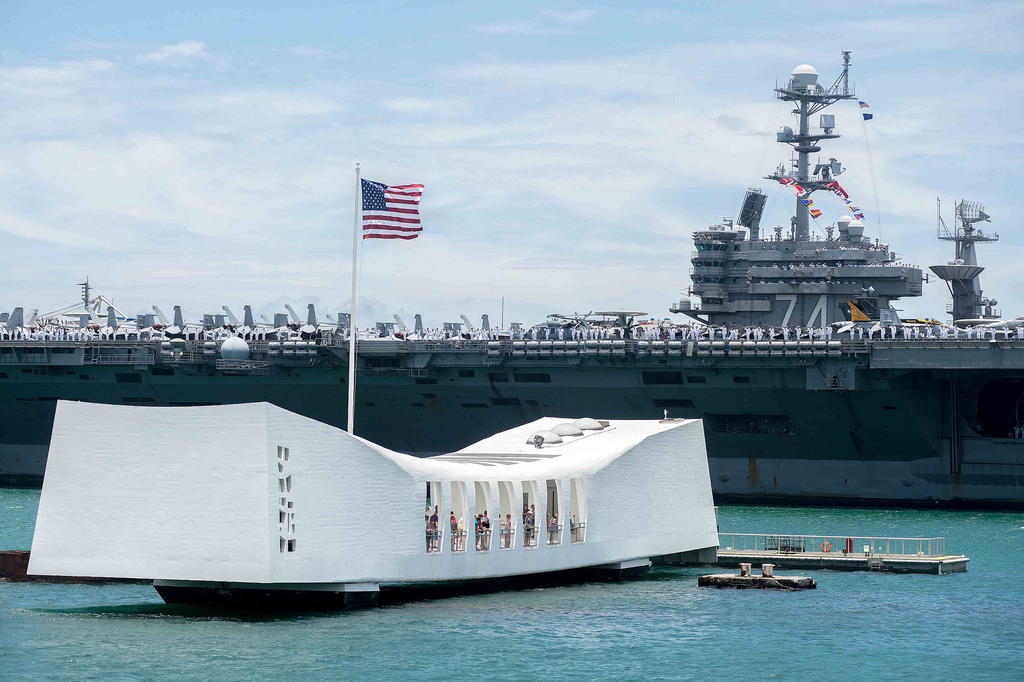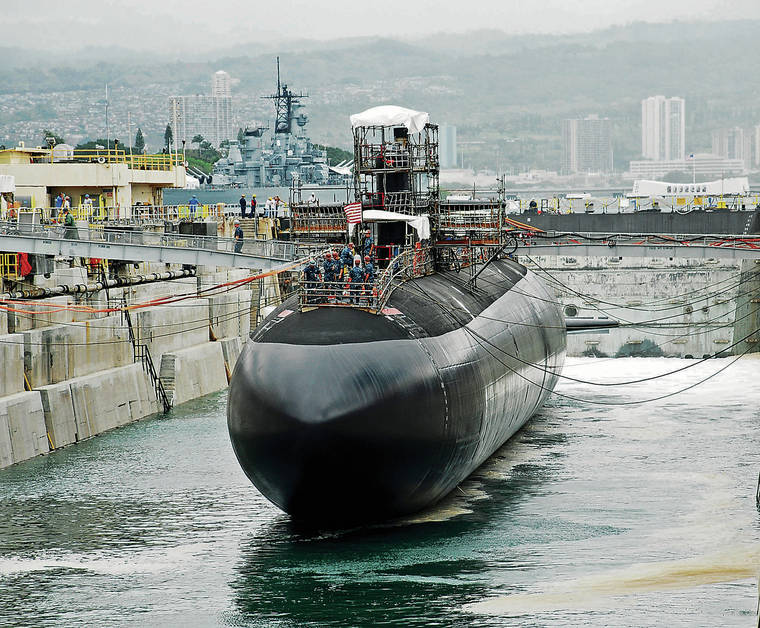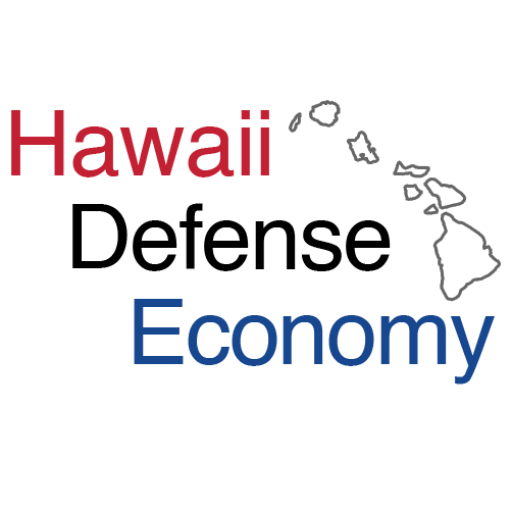Pearl Harbor Naval Shipyard
December 7, 1941 was the fateful day that thrust the United States into World War II and became a defining moment for Pearl Harbor Naval Shipyard (PHNSY). Two battleships, the USS Arizona and USS Oklahoma were lost forever. The Arizona exploded and sank after a bomb detonated in a powder magazine, killing 1,177 officers and crewmen, and the Oklahoma was sunk by several torpedoes during the attack and 429 crew died when she capsized on Battleship Row. In the months following the Japanese attack on Pearl Harbor, the shipyard played a critical role in repairing heavily damaged U.S. ships. In fact, of the eight battleships targeted during the attacks, all but two were eventually repaired and returned to the U.S. Navy’s fleet. The USS West Virginia and the USS California had both sunk completely, but the shipyard raised them, repaired them and returned them to the fight. The shipyard earned its motto “We keep them fit to fight” in the days and months following the attacks of December 7.

Strategic Importance
Today, Pearl Harbor Naval Shipyard is our nation’s largest, most comprehensive fleet repair and maintenance facility between the U.S. West Coast and the Far East. It’s one of four Naval Shipyards, and it continues to play a critical role in our Nation’s defense as the U.S. Navy refocuses 60% of its operational fleet towards the Asia-Pacific region in order to secure sea lanes of communication and commerce, effectively projecting power across the expansive Pacific and Indian oceans. China’s navy is posing a major challenge to the U.S. Navy’s ability to achieve and maintain wartime control of blue-water ocean areas in the Western Pacific. In response to this threat, the Navy is positioning more naval assets in the region and is lengthening its newest attack submarine, the Virginia-class, by approximately 80 feet to accommodate four Virginia Payload Module (VPM) tubes, each containing seven Tomahawk Land Attack Missies (TLAMs). Homeported in Pearl Harbor, the Virginia-class submarine is replacing the Los Angeles-class. The last major shipyard work on Los Angeles-class submarines is expected in 2022.

PHNSY currently has four certified graving drydocks, with Drydocks 1, 2, and 3 dedicated to major submarine maintenance, and Drydock 4, located outside of the shipyard’s Controlled Industrial Area (CIA), designated primarily to accommodate the Navy’s mid-Pacific surface combatant maintenance requirements. All but Drydock 3 can accommodate the new 460-foot lengthened Virginia-class submarines expected to be commissioned in 2025. The Naval Sea Systems Command’s (NAVSEA) Shipyard Infrastructure Optimization Plan (SIOP) Program is evaluating plans to build its first new dry dock at Pearl Harbor since 1943 to increase submarine repair capacity and improve efficiencies. The Hawaii plan involves billions in construction dollars that will benefit local workers.
Economic Impact
Pearl Harbor Naval Shipyard plays a critical role in Hawaii’s economy. It is the largest industrial employer in the state, with a civilian workforce of more than 5,000 and over 500 active-duty Navy personnel. These are well-paying jobs that require a highly skilled and specialized workforce to meet the technical requirements of today’s modern Navy. PHNSY is home to one of the largest concentrations of engineers in the heart of the Pacific Ocean. The engineers at the shipyard develop plans and technical specifications to maintain, repair and upgrade nuclear and conventionally powered naval ships. In addition to engineers, PHNSY employs skilled technicians and journey workers in various trades. To support these technical requirements, PHNSY operates a highly successful and longstanding Apprentice Program, which is a partnership between the Shipyard, the U.S. Department of Labor (DOL) and Honolulu Community College (HCC). The program includes full-time employment, hands-on training, and a tuition-free, Applied Trades degree from HCC.
As the U.S. continues to pursue a strategic rebalance to the Asia-Pacific region, Hawaii remains a vital waypoint and defensive outpost. And as the U.S. military concentrates its operational focus on the area, Pearl Harbor Naval Shipyard will continue to be a critical enterprise for our state and for our country.
In addition to being one of the state’s largest employers, the Shipyard distributes millions of dollars in contracts annually to a wide range of Hawaii businesses. An important advocate of the industry supporting PHNSY, The Ship Repair Association of Hawaii, is a nonprofit voluntary trade association, dedicated to growing Hawaii’s ship repair industry through a unified public/private partnership by providing cost effective, high quality services to government and commercial customers. Its members work hard to support the growth and sustainment of the ship repair industry and its skilled workforce in the state.
C&S Services
Located in Hawaii, C&S Services, Inc. has been providing ship- and land- based repair services since 1990. C&S is an Asian Pacific American, Self-Certified Small Disadvantaged Business performing marine, industrial and commercial repair, fabrication, and preservation with in-shop and dockside capabilities at its Ewa Beach location.
